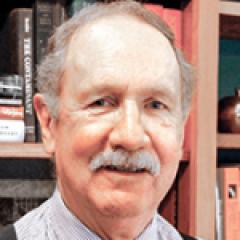The Widening Gyre: School Reform, Political Reform
Turning and turning in the widening gyre
The falcon cannot hear the falconer;
Things fall apart; the centre cannot hold
William Butler Yeats called this center Spiritus Mundi, the set of values, beliefs sanctions and behaviors that hold us together. His fears of collapse were grounded in the horrors of World War I, the Russian Revolution and the violence of the Irish revolution. In a later age, Joan Didion referred to this spirit as our national narrative -- the framework of our values, identity, spirituality and hope.
What is this spirit that unites us? It is the resonating harmonic of the American Dream. We believe that any child can grow up and be successful by dent of education and her own hard work. We glory in our tales of seven presidents who grew up in log cabins. Our major presidential candidates both invoke and pay homage to the dream.
Our fulfillment was always imperfect. Yet, across the twentieth century, we codified our vision of who we are, what we could be, and what we must be. Laws were passed that we would educate all children, assure adequate food and clothing, provide employment at a living wage, ensure affordable and decent housing, guarantee that economic opportunity would be free and fair, regulate the gilded age hegemony of moneyed oligarchs and great inequalities, make medical care available to all, and protect people against the misfortunes of unemployment, sickness and old age. These were the things we believed and to which we aspired. As James Truslow Adams said in 1931, “. . . it is a dream of a social order in which each man and each woman shall be able to attain the(ir) fullest stature.” In the minds of many, this is the true definition of American exceptionalism.
Today, angry denial and dead-locked disputations are the primal values. With a long slow recession, severe under and unemployment, increasing economic gaps, and the hollowing-out of our middle-class; our grasp on the dream is drifting away. Will the center hold?
The wealth disparity between the top one percent and the bottom 90 percent is now worse than it was in the Great Depression. Six percent of the nation’s population lives below half of the poverty line (that’s $11,000 a year for a family of four). Meanwhile, the average CEO is given $9.6 million per year -- which would take the person making the median national wage 244 years to accumulate. Talk radio defenders of these inequalities affirm Yeats, “The best lack all conviction while the worst are full of passionate intensity.”
In this strange land, schools are blamed for these social and economic disparities. Tubs are thumped about our middling international test scores -- even though they are not related to the health of the economy in any meaningful way. What is not said is that if we look at only the schools where our affluent children go, the United States has the highest test scores in the world.
Further, lamentations about “failing schools” obscure the fact that achievement for all students has improved over the past thirty years and the achievement gap was actually closing until NCLB type test-based accountability systems turned our attention toward market variables and away from social and civil variables. Then the gap quit closing.
Most troubling is that the growing income gap in our society is now reflected in widening gaps in our test scores. Over the past twenty-five years, the achievement gap between our wealthiest and our poorest has grown by as much as forty percent.
In today’s reform narrative, schools are supposed to single-handedly overcome poverty. But paradoxically, the very means of our salvation are eliminated or reduced in statehouses and in Washington. Instead of support, they substitute punishments (such as the federal school “turnaround” strategies) and chant vague claims that market forces will improve our schools. Alas, market forces have scant success in resolving social problems says the Director General of the World Health Organization.
The cold fact we must face is that the achievement gap is the symptom of our social and economic breakdowns more than the measure of the failings of our schools. A Century Foundation report by RAND researcher Heather Schwartz found that poor students attending school with more affluent students registered gains four times greater than is typically found for effective educational innovations. The huge and positive effects of equitable funding have been well documented for 25 years. The science is clear -- as long as there are large wealth and equality gaps, the result will be large achievement gaps.
Our widening gyre, our great danger, is that the manic drum-beat of our tribes is louder than the voice of our knowledge. We no longer hear each other. Yet, 72 percent of Americans still hear and hold the American Dream. We must build on this base. If we don’t embrace this greater national narrative, if we don’t make it real, then we must ask Yeats’ question, what rough beast is slouching toward Bethlehem to be born?
William J. Mathis is Managing Director of the National Education Policy Center, a member of the Vermont State Board of Education, and a former school superintendent. The views expressed are his own.
